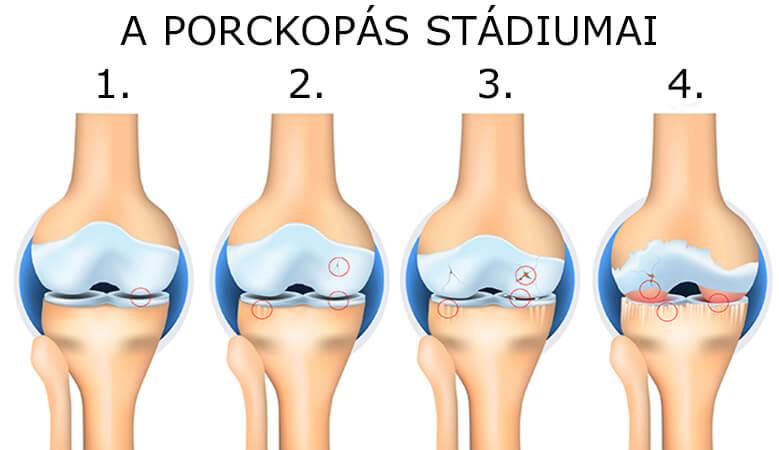
The cartilage that covers the surface of the bones becomes fragmented and uneven in wear and tear disease.
These can make movement painful and difficult, or the joint can become deformed and stiff.
Triggering factors may include a sedentary lifestyle, obesity, unilateral loading or a previous injury to the joint. Joint wear is more than just changes to the cartilage and underlying bone structure. The joint capsule, ligaments and synovium can also become problematic. Therefore the treatment options are much wider.
There are several different ways to treat cartilage damage
Treatment without medication: exercise, physiotherapy and some dietary supplements can be of considerable help. Individually developed movement therapy involves strengthening the correct muscles, developing the correct posture. But you should also remember to use simple treatments such as warm compresses, ice packs or resting the joint. Warm compresses are mainly used in cases of chronic inflammation and pain, as they are intended to relieve pain and muscle spasm. Use ice packs for tendonitis, arthritis, sciatica and to relieve inflammation.
Balneotherapy is a spa treatment that contains minerals. It is specifically recommended for the treatment of multiple articular cartilage damage. Acupuncture has been shown to be effective in treating cartilage wear and relieving pain.
The regular use of ground exercises has a very positive effect on pain reduction. Some studies have looked at both strength training and aerobic exercise and all have shown positive results.
Movements in water also have very positive effects. If there is wear and tear on the cartilage in the hip or knee, aquatic exercise has a very positive effect.
For higher weight people, moderate weight loss can help a lot. Weight loss also reduces the pain associated with cartilage wear and physical limitation.
Treatment of knee cartilage damage can be alleviated at home.
Here, of course, we mean the pain. Exercise is very important in cases of cartilage damage. Swimming and cycling are recommended. Unfortunately, intensive forms of exercise such as ball games are not recommended. The choice of comfortable and suitable shoes is also very important. Eating plenty of vegetables, fruit and whole grains will improve the condition of your joints. Losing excess weight is also important in the treatment of cartilage wear. Excess weight can cause joint problems and pain. Herbs that can be used to help with cartilage wear include turmeric, ginger, cayenne pepper and devil’s claw.
It is also possible to treat hip cartilage damage by “oiling” the joints a little. Hyaluronic acid is a natural molecule that is very good for the joints and also absorbs friction and shock.
Treating cartilage detachment at home is not recommended under any circumstances, as it is a serious problem that should be treated immediately by a doctor.
In the case of knee cartilage damage, medicine can be used but HillVital Maximum balm, a balm made only from herbs, can also be very useful. For cartilage wear, certain nutritional supplements, such as glucosamine and chondroitin sulphate, can help to maintain cartilage health.
What are the symptoms of hip cartilage wear?
Hip arthritis, also known as coxarthrosis or osteoarthritis of the hip joint, is a condition in which the cartilage of the hip joint breaks down and wears away. The symptoms of the disease develop gradually and can vary depending on the severity of the condition.
Pain: The most common symptom is pain in the hip joint. Initially, the pain may be mild or occur only during certain movements, but it can worsen over time and may even be felt during rest.
Reduction in range of motion: Reduced range of motion, stiffness and loss of flexibility in the hip joint may indicate cartilage wear.
Hip joint cracking: Wearing surfaces can wear away cartilage in the hip joint, causing cracking or clicking during movement.
Swelling: Swelling around the hip joint can occur, especially if there is inflammation associated with cartilage wear.
Variable gait: Changes in gait may also occur due to cartilage wear in the hip. For example, people may try to reduce pain, which can lead to changes in their gait pattern.
Night pain: Pain may also occur at night, especially when lying on the affected side.
Nerve root irritation: lesions can also cause irritation of the nerve roots, which can cause further pain and discomfort.



